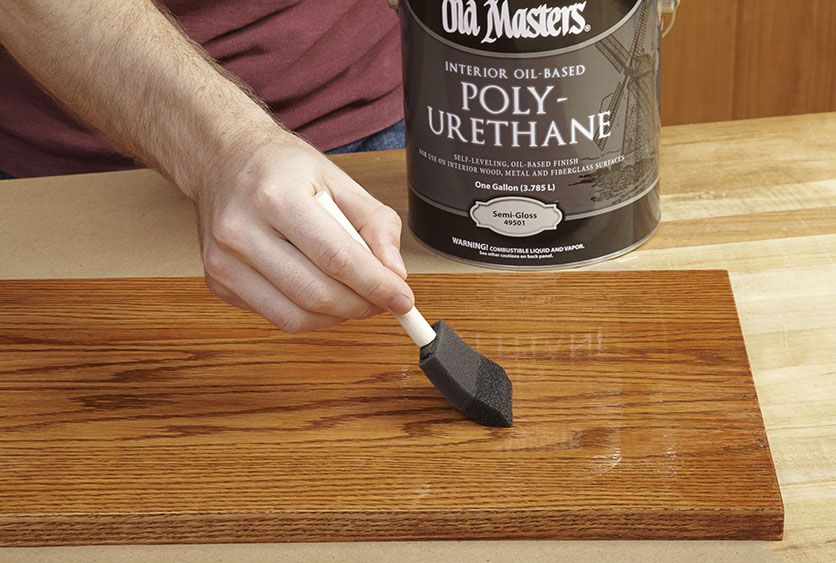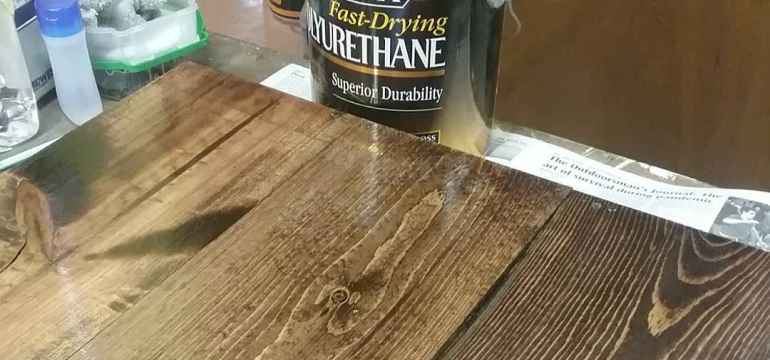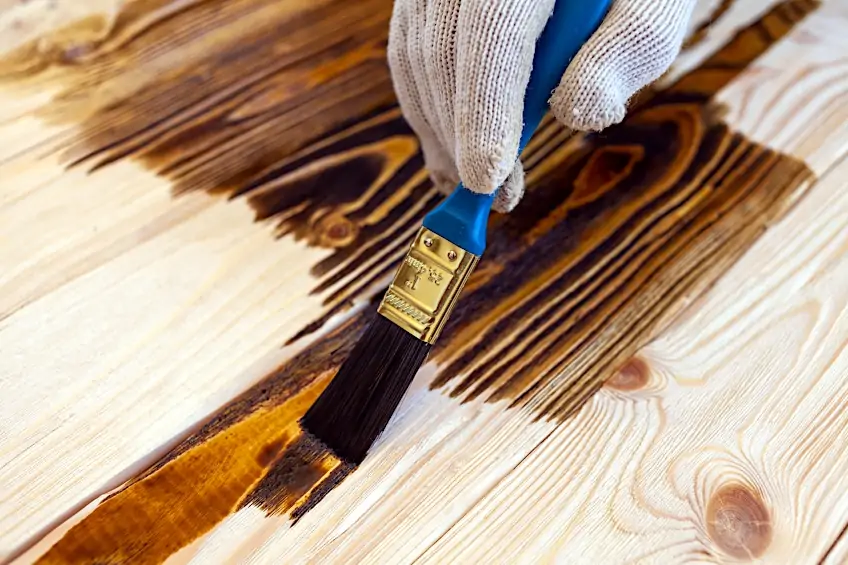
When working on wood finishing projects, many people often wonder, how long should wood stain dry before polyurethane? It’s an important question to ask, especially if you want the final finish to be flawless. Getting the timing right between staining and applying polyurethane is essential for the best results. The correct drying time ensures that the stain properly sets and cures, allowing the polyurethane to bond effectively to the wood surface. If you rush the process, you may face issues such as bubbling, an uneven finish, or even peeling in the future. This article provides a comprehensive answer to the question and gives you all the details you need to know.
Why Drying Time Matters for Wood Stain
The question of how long wood stain should dry before polyurethane is more than just about patience; it’s about achieving a long-lasting, beautiful finish. When wood stain is applied to wood, it penetrates the surface and imparts color to the wood. However, the stain needs to fully absorb and dry before you add any additional layers, like polyurethane. Polyurethane is a clear protective finish, which is why it’s essential to wait for the stain to be completely dry. If the stain hasn’t fully dried, it can trap moisture, resulting in uneven finishes, a poor bond, or the polyurethane bubbling. Simply put, skipping this crucial step can lead to irreversible damage to the wood and your project.

What Affects Drying Time for Wood Stain?
There are several variables that influence how long it takes for wood stain to dry before applying polyurethane. These factors include:
- Type of Stain: There are different kinds of wood stains, such as oil-based and water-based. Oil-based stains are much slower to dry and need more time before applying polyurethane. Water-based stains dry quicker, but still require sufficient time to set before applying a protective finish.
- Humidity and Temperature: The climate and temperature of the room play a large role in how fast the stain dries. High humidity levels or cooler temperatures will slow down the drying process, while warm, dry air speeds up the evaporation of moisture from the stain.
- Wood Type: Different wood species absorb stain at different rates. Hardwoods tend to absorb stain slower than softwoods. For example, pine tends to absorb stain more quickly, while oak or maple takes longer to dry due to its denser structure.
- Application Thickness: If you apply a thick coat of stain, it will take much longer to dry. Thin coats dry faster, which is why it’s often recommended to apply the stain in multiple layers instead of one heavy coat.
Understanding these factors will help you determine how long wood stain should dry before polyurethane in your specific situation.
How Long Should Wood Stain Dry Before Polyurethane?
In general, most stains require at least 24 to 48 hours of drying time before applying polyurethane. However, the exact time can vary based on the type of stain you use, the environmental conditions, and the type of wood you’re working with. Let’s break it down for both oil-based and water-based stains.
1. Oil-Based Stain and Polyurethane
If you’re using an oil-based stain, the drying time is significantly longer. Oil-based stains generally take 24 hours to dry before polyurethane can be applied. If the room is cold or the humidity is high, you may need to wait up to 48 hours to ensure the stain has fully dried and cured. While you might be tempted to apply the polyurethane sooner, applying it over a still-moist stain can cause bubbling or a weak finish. For optimal results, always wait at least one full day before applying polyurethane.
2. Water-Based Stain and Polyurethane
Water-based stains dry much faster than oil-based stains. With water-based stains, you can typically apply polyurethane after 4 to 6 hours. However, if you’re working in a humid environment, it’s best to wait at least 8 hours to ensure the stain is completely dry. While some water-based stains might seem dry to the touch sooner, it’s always wise to wait a bit longer to avoid any potential issues with the polyurethane layer.
3. Staining in Humid or Cold Conditions
If you’re working in a more humid or cold environment, the drying time for wood stain will be significantly affected. In these conditions, it may take 48 hours or longer for oil-based stains to dry fully. Water-based stains may still dry relatively faster, but they can take up to 8 hours to dry adequately in cooler or more humid settings. Always be cautious when the weather is less than ideal. Before proceeding with polyurethane application, be sure to check the wood for moisture or stickiness.
4. Staining in Warm or Dry Conditions
Warm, dry conditions can speed up the drying process considerably. If you’re working in a well-ventilated, dry area with temperatures around 70 to 80°F (21 to 26°C), oil-based stains might dry in as little as 12 hours. Water-based stains can be ready for polyurethane in as little as 3 to 4 hours under these conditions. Even in such favorable conditions, always touch test the wood to ensure that no tackiness remains.

The Importance of Waiting for Wood Stain to Dry Completely
So why should you wait for the stain to fully dry before applying polyurethane? Polyurethane needs to bond to the wood’s surface to provide the protective qualities it’s known for. If the stain is still wet or damp, the polyurethane will bond to the moisture rather than the wood. This can cause several issues:
- Bubbling or blistering of the finish.
- Uneven sheen or poor adhesion between the layers.
- Streaking or smudging of the stain color.
- Peeling or lifting of the polyurethane over time.
Polyurethane is designed to protect and enhance the appearance of the wood. However, if applied too soon, it may not work effectively, leading to an unsatisfactory result that could ruin the entire project.
What Happens If You Don’t Wait Long Enough?
When you apply polyurethane before the stain is fully dry, you risk facing some serious problems. Here’s what can go wrong if you don’t wait long enough:
1. Poor Adhesion
If the stain hasn’t fully dried, the polyurethane will not adhere properly to the surface. This poor adhesion can result in peeling or lifting of the polyurethane layer over time. In extreme cases, the entire finish can begin to bubble and peel off.
2. Bubbling and Blistering
Trapping moisture under the polyurethane can cause the surface to bubble. As the moisture tries to escape, it pushes against the polyurethane layer, causing the finish to form blisters. These bubbles are not only unsightly but also weaken the protection the polyurethane is supposed to offer.
3. Uneven Finish
Applying polyurethane over a still-damp stain can lead to uneven results. The polyurethane will dry differently on areas that are more saturated with stain, leading to blotchy, inconsistent coverage. This could spoil the smooth and even finish that you’re aiming for.
4. Discolored or Stained Polyurethane
If the stain hasn’t cured completely, it may bleed into the polyurethane, causing discoloration. Instead of a clear, glossy topcoat, you might end up with a murky or streaked finish, which can ruin the entire aesthetic of the piece.

How to Test if the Stain is Ready for Polyurethane
It’s always a good idea to check the condition of the stain before you apply polyurethane. Here are some tests you can use to determine if the stain is dry:
- Touch Test: Lightly run your finger over the stained surface. If it feels dry and smooth with no tackiness or residue, the stain is likely ready for polyurethane. If the surface is sticky, let it dry longer.
- Clean Cloth Test: Wipe the surface with a clean, dry cloth. If no stain residue appears on the cloth, then the surface is dry enough for polyurethane.
- Visual Inspection: Look closely at the stained wood. If the color looks even and there’s no visible moisture on the surface, it’s likely that the stain is dry enough to proceed.
Wrapping Things Up: Getting the Drying Time Right
In the end, the answer to how long should wood stain dry before polyurethane depends on several factors, but as a rule of thumb, you should wait 24 to 48 hours for oil-based stains and 4 to 8 hours for water-based stains. While it’s tempting to move quickly and apply the polyurethane right after staining, taking the time to let the stain fully dry is crucial. Waiting for the correct drying time ensures better adhesion, a smoother finish, and long-lasting results that protect and enhance your wood surface. Patience is key to getting the perfect finish for your woodworking projects.